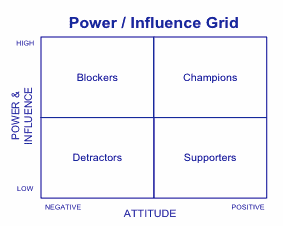Communication Management Approach
An item that is usually HIGH on the reasons for project failure list is:
A failure to adequately identify and engage stakeholders in the project.
Helpful Hint #1: Define stakeholders more broadly.
The definition of Stakeholder as found in the PRINCE2 glossary is: Any individual, group or organization that can affect, be affected by, or perceive itself to be affected by an initiative (programme, project, activity, risk).
I find that the term stakeholder is used in a very narrow sense. It is often interpreted to mean end users of the project product. Even the phrase end user is interpreted as direct users. What about those who will support, maintain or operate the project product when it is in day to day use.
Stakeholders are more than just USERS. USERS are more than just the end users.
PRINCE2 defines users as those who will USE the products of the project, are IMPACTED by the project or who will SUPPORT & MAINTAIN the products of the project.

Helpful Hint #2: Understand your stakeholders’ position relative to the project.

This hint has many aspects to it.
- What power and influence does a stakeholder have within or over the project?
- What is their current support level (or not) for this project?
- How do they expect to be involved in the project (or not)?
- What areas of the project are they interested in?
- Who do they want to interface with in this project?
Champions ─ Powerful people who are actively supportive of the project.
Blockers ─ Powerful people who will actively resist the project.
Supporters ─ People with little power who are in favour of the project.
Detractors ─ People with little power who are against the project
Influence/Impact Grid: “Influence” (active involvement in the project) and “impact” (ability to change project’s planning or execution).
Salience Model: “Power” (ability to impose their will), “urgency” (their need for immediate attention), and legitimacy (the appropriateness of their involvement
Helpful Hint #3: Understand what you need from the stakeholder to enable project success.
- What is the desired level of support that we require to make this project successful?
- How do we need them to be involved (or not) to increase the change of success?
- What key messages do we want them to get from this project?
- Who should interface with this stakeholder?
- Do they see themselves gaining or losing because of this project?
- Do they see this project as a threat or opportunity?
Engagement level classifications:
- Unaware. Unaware of project and potential impacts.
- Resistant. Aware of project and potential impacts and resistant to change.
- Neutral. Aware of project yet neither supportive nor resistant.
- Supportive. Aware of project and potential impacts and supportive to change.
- Leading. Aware of project and potential impacts and actively engaged in ensuring the project is a success.
Helpful Hint #4: INCLUDE MORE STAKEHOLDERS DIRECTLY
This is the most important tip. Based on a combination of what the stakeholder needs/wants and what the project needs/wants, include more stakeholders directly in the project. Assign them to tasks, plan for their time, involve them in discussions and overall increase the chance of success.
Common areas of involvement
For external facing stakeholders:
- conduct focus groups to ask opinions, to allow them to raise issues and discuss concerns, to ask about needs/expectations/requirements.
- provide a mechanism to external stakeholders to contact the project and ask questions.
- provide a mechanism for external stakeholders to obtain status of what is going on in the project. This could be in the form of a website, newsletters, regular publications or emails.
For internal stakeholders:
- involve them in discussions about their requirements, needs & expectations.
- involve them in identifying quality criteria for certain deliverables/products
- have them participate in testing/checking/reviewing of project products
- involve them in pilot /sample usage periods.
Paul Atkin
